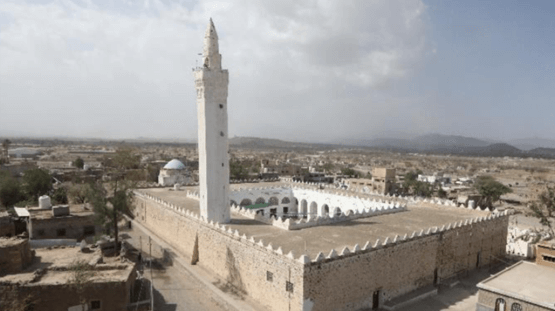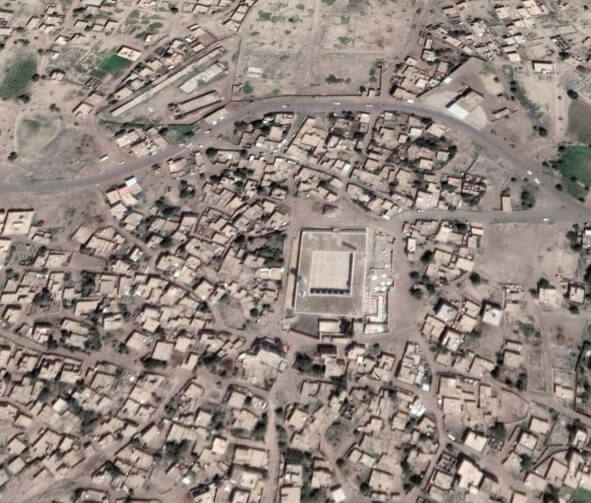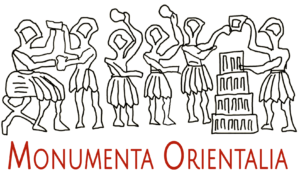
Al-Janad Mosque – Ta‛izz
جامع الجند- تعز
Monument description
Al-Janad Mosque is considered the second Mosque in Yemen after the Great Mosque in Sana’a, and the third Mosque in the world after the Prophet’s Mosque and the Great Mosque in Sana’a. According to the historical sources, it was built in the year 10 AH by the great companion of the Prophet Mohammad, Mua’th bin Jabal, by order of the Prophet himself, peace be upon him, who specified the place of its construction. The city of Ta‛izz about 20 km from the Al-Janad mosque, was an important commercial center for the mountain caravan before Islam, and remained a famous destination for pilgrims in Islamic times.

Architectural and cultural value
Construction style and built date: The Mosque was built according to the layout of the Prophet’s Mosque, i.e. consists of a central courtyard surrounded by hallways, the deepest of which is the Qibla portico, in addition to outbuildings. The mosque was built in the year 10th AH, and Mua’th bin Jabal prayed in it on the first Friday of Rajab, and this day is still considered a holy day in which people come to the Mosque from different regions. It was clarified from the study of historical sources and written texts found in the Mosque that the it was renewed seven times, including during the Umayyad and Abbasid eras.
Components of the Mosque: The Mosque consists of a central courtyard surrounded by hallways, the deepest of which is the qibla portico, in addition to annexes Matahir (Ablution Units), and washrooms, steam baths, burials, and toilets. The area of the Monument with courtyard and the annexes is about 5485 m2.
- Justifications for intervention:
- 1 – An Islamic monument.
2 – It is one of the oldest mosques in Islam
3 – Due to threats that the monument faces as the time goes by, and the serious exacerbation and expansion of the damage.
4 – Preserve the building from being destroyed and stop the expansion of damage.
- Monument conditions and treatment:
- The monument is damaged and there are many damages that need urgent intervention to be repaired,
namely: - Urgent interventions for protection and rescue
Serious damages
1. Urgent stabilization works are required as horizontal and vertical cracks in the façades anticipate their major collapse
Treatment:
– Removing the cement mortar between the stones and replacing it with plaster mortar (Al-Noura Al-Kadri)
– Removal and substitution of corroded and salinized stones, and use of plaster mortar (Al-Noura Al-Kadari) between the stones.2. Moisture in the foundations on the four facades from
the outside and the inside
Treatment:
– Remove and restore the foundations from the outside with the consolidation around the mosque using
stones
– Use the special material (drops) for the foundations well to insulate excess of moisture
– Remove the plaster layer on walls and remove the damaged parts that have cracks of the façade and rebuild it using the same building materials, if possible. - 3. Random excavations along the eastern and southeastern facades and around the Matahir
(Ablution Units), revealed old canals, pits and basins, which pose a direct threat to the Mosque, where rainwater collects, and it helps in the occurrence of defects in the facades and the fall of the ruins of ancient buildings that were discovered in a random way as well
Treatment:
– Drainage of the water through the old canals and treatment of the floors to prevent water from penetrating into the foundations of the Mosque
– Coverage of the grain dumps well with traditional materials to prevent water from collecting
– Urgent excavations are needed in these places to further reveal and protect other canals and buildings parts of which appeared to preserve them before they get destroyed as a result of their detection without proper planning.4. Erosion and cracking of the plaster (Qudad) layer with the erosion of the wood of the Minaret
Treatment:
– Making a plaster impregnation and casting for the Minaret
– Executing the work of the plaster covering for the damaged parts of the Minaret
– Spray an insecticide to combat the termite.

Countries














